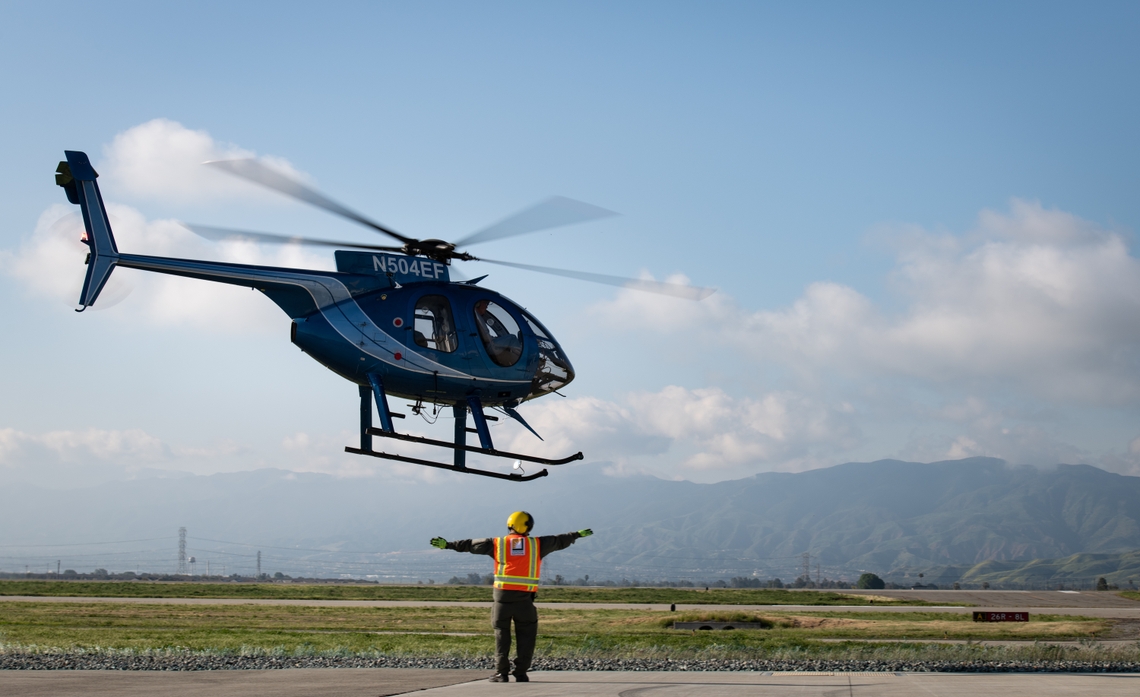As a parade of first responder helicopters made their way to Chino Airport recently, onlookers may have thought they were witnessing some pending disaster response. But these helicopter pilots from local fire, police and EMS departments are here to learn about how to safely fly around electrical wires.

As 18 helicopters lined up on the helipad ramp, more than 140 first responder pilots from across Southern California — including the Los Angeles Fire Department, California Highway Patrol and Long Beach Police Department — took part in the first wire avoidance seminar hosted by Southern California Edison.
“We are coming together as a community to save lives,” said Torbjorn “TC” Corell, SCE Air Operations chief pilot, who organized and led the seminar. “One of the deadliest forms of accidents in our industry are wire strikes and it’s the same accident over and over again and one of the most common.”
The first responder pilots gathered to learn about flying safely at low altitudes where the environment often includes miles of electrical wire and infrastructure. Annual data shows there are on average two wire strikes each week involving aircraft in the U.S.

The seminar addressed optical illusions where wires often seem to disappear due to the sun’s rays, lack of contrast or obscuring terrain. The pilots learned to instead look at where the hardware is positioned. In addition, not all power lines, especially guy wires, are depicted on aeronautical maps.
“The reason for wire strikes is a lack of understanding of what you are looking at. Pilots need to understand the hardware,” said Corell.
SCE’s Air Operations currently has six helicopters and plans to add two more by the end of this year. In addition to supporting infrastructure projects, SCE’s pilots also do line inspections using high-definition cameras and infrared scanning. The wire avoidance seminar is part of SCE’s ongoing safety journey for both employees and customers.

“Helicopters provide a tremendous amount of efficiency while working on our system,” said Marc Ulrich, SCE vice president of customer service operations, who is also a private pilot. “They can get to difficult places to help us maintain healthy operations of our grid.”
Jim Davidson, a retired pilot with the Orange County Fire Association, has been flying helicopters since 1974 and took part in the seminar.
“Every time I fly, I learn something new and different about identifying wires,” he said. “[This seminar] is important because we want to stay alive.”
Tim Tucker, U.S. Helicopter Safety Team executive committee member and a designated pilot examiner with the Federal Aviation Administration, has more than 50 years of experience in the industry and has traveled to more than 30 countries teaching helicopter safety.

“Everywhere I go, wire strikes are one of the leading causes of fatal accidents,” he said. “It’s not a U.S. problem, it’s a helicopter problem in general.
“This seminar is important because it deals 100 percent with wire strikes.”









